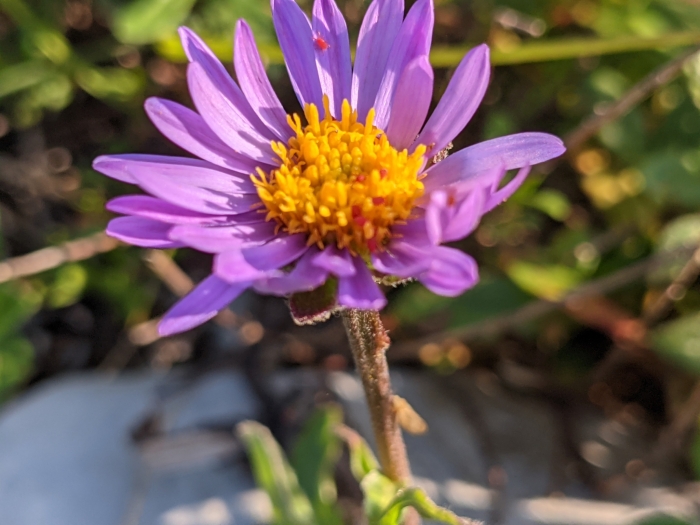Alpine Aster
(Aster alpinus)
Alpine Aster (Aster alpinus)
/
/

agosti
Public Domain


















































Estimated Native Range
Summary
Alpine Aster is valued for its ability to attract pollinators such as bees, butterflies, and birds, making it a beneficial addition to wildlife gardens. It is well-suited for rock gardens, borders, and alpine garden settings due to its compact size and vibrant flowers. While it prefers cooler climates, it is adaptable to a range of soil types, including those with varying clay, silt, and loam compositions. For optimal growth, Alpine Aster should be planted in full sun and provided with medium amounts of water, ensuring the soil has medium to slow drainage to prevent waterlogging. Despite its preference for low fertility soils, it can tolerate a range of conditions, making it a versatile choice for gardeners.CC BY-SA 4.0
Plant Description
- Plant Type: Herb
- Height: 0.5-0.3 feet
- Width: 0.5-1 feet
- Growth Rate: Slow
- Flower Color: Pink, Purple
- Flowering Season: Summer
- Leaf Retention: Deciduous
Growth Requirements
- Sun: Full Sun
- Water: Medium
- Drainage: Medium, Slow
Common Uses
Bank Stabilization, Bee Garden, Bird Garden, Butterfly Garden, Deer Resistant, Drought Tolerant, Groundcover, Hummingbird Garden, Low Maintenance, Potted Plant, Rabbit Resistant, Rock Garden, Salt Tolerant, Showy Flowers, Street Planting
Natural Habitat
Native to alpine meadows, rocky slopes, and tundra regions across North America and Eurasia
Other Names
Common Names: Alpen-Aster , Alpaster
Scientific Names: Aster alpinus , Aster scaber , Aster alpinus subsp. dolomiticus , Aster alpinus var. dolomiticus , Aster alpinus var. cylleneus , Aster alpinus var. bohemicus , Aster alpinus var. breyninus , Aster alpinus var. oxyceramis , Aster alpinus var. subscaposus , Aster fallax var. fallax , Aster hispanicus
GBIF Accepted Name: Aster alpinus L.